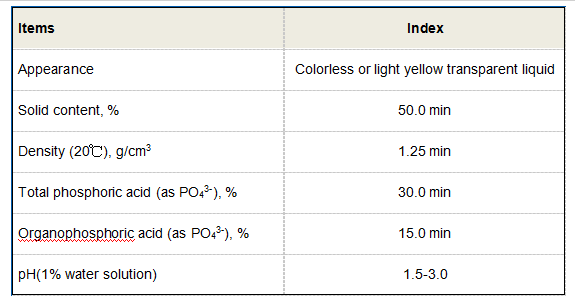Innovative Applications of Polyepoxysuccinic Acid in Modern Chemistry and Industry
Polyepoxysuccinic Acid An Overview of Its Properties, Applications, and Benefits
Introduction
Polyepoxysuccinic acid (PESA) is a versatile polymer with specific chemical characteristics that make it valuable in a variety of industrial applications. As a derivative of succinic acid, PESA exhibits unique properties that enhance its functionality in both chemical and physical domains. This article explores the fundamental aspects, applications, and benefits of polyepoxysuccinic acid.
Chemical Structure and Properties
Polyepoxysuccinic acid is a biodegradable polymer that contains epoxy groups in its chemical structure. The presence of these epoxy groups allows for various chemical reactions, enhancing PESA’s ability to form cross-links with other materials, leading to improved durability and stability. Additionally, the polymer is water-soluble, which facilitates its incorporation into aqueous formulations.
The epoxy functionalities make PESA an effective chelating agent, wherein it can bind metal ions, preventing scaling and corrosion in systems where metals are prevalent. Its low toxicity and environmental compatibility are significant advantages, especially as industries move towards more sustainable practices.
Applications of Polyepoxysuccinic Acid
1. Water Treatment One of the most significant applications of PESA is in water treatment processes. Its chelating properties enable it to sequester metal ions, thus preventing the formation of scale and reducing corrosion in pipelines and water treatment systems. Furthermore, PESA can enhance the performance of flocculants and coagulants, improving the overall efficiency of wastewater treatment.
2. Oil and Gas Industry In the oil and gas sector, PESA is utilized in drilling fluids and production processes. The compound's capacity to inhibit scale formation and corrosion makes it invaluable in maintaining the integrity of drilling equipment and pipelines. This contributes to operational efficiency and minimizes downtime due to maintenance.
3. Agriculture PESA finds applications in agriculture as a dispersing agent in pesticide formulations. By improving the solubility and stability of active ingredients, PESA ensures that pesticides remain effective over time. Additionally, its role in nutrient delivery systems enhances the bioavailability of essential nutrients for plants, promoting healthier crop yields.
polyepoxysuccinic acid

4. Cosmetics and Personal Care The cosmetic industry has also embraced polyepoxysuccinic acid for its emulsifying and stabilizing properties. PESA is incorporated into creams, lotions, and other personal care products to enhance texture and consistency. Its biodegradable nature aligns well with the recent trend towards eco-friendly formulations.
Benefits of Polyepoxysuccinic Acid
The use of polyepoxysuccinic acid offers several compelling benefits across its various applications
- Environmental Sustainability PESA is a biodegradable alternative to traditional synthetic polymers, making it a preferable choice for industries striving to reduce their environmental footprint. Its ability to enhance water treatment processes also contributes to environmental conservation.
- Versatility The unique chemical properties of PESA allow it to be used in diverse fields, from water treatment to agriculture and personal care products. This versatility appeals to manufacturers seeking multifunctional additives.
- Cost-Effectiveness By reducing the need for frequent maintenance and equipment replacements due to corrosion and scale formation, PESA can ultimately lead to cost savings in industrial applications. Its effectiveness as a chelating agent can enhance the performance of existing systems, further optimizing resource usage.
- Improved Performance PESA enhances the performance of other chemicals in a formulation. Whether in water treatment, agriculture, or cosmetics, its ability to improve solubility and stability translates to better overall product efficacy.
Conclusion
Polyepoxysuccinic acid is a polymer with an extensive range of applications and benefits that make it indispensable in various industries. Its unique chemical structure offers superior performance in water treatment, oil and gas operations, agricultural practices, and cosmetic formulations. As industries continue to prioritize sustainability and efficiency, PESA's role is likely to expand, making it a significant component of the future of green chemistry and innovative material solutions.
-
Understanding Polycarboxylic Acids: Properties, Applications, and Future PotentialNewsJul.28,2025
-
Scale Inhibitor Explained: How to Protect Your System from Limescale and Hard Water DamageNewsJul.28,2025
-
Scale and Corrosion Inhibitors: Essential Chemicals for Industrial Water System ProtectionNewsJul.28,2025
-
Polyaspartic Acid: A Biodegradable Polymer for Sustainable ChemistryNewsJul.28,2025
-
Isothiazolinones: A Versatile Antimicrobial Class with Industrial Power and Regulatory ChallengesNewsJul.28,2025
-
A Deep Dive into 2-Phosphonobutane-1,2,4-Tricarboxylic Acid (PBTC)NewsJul.28,2025





